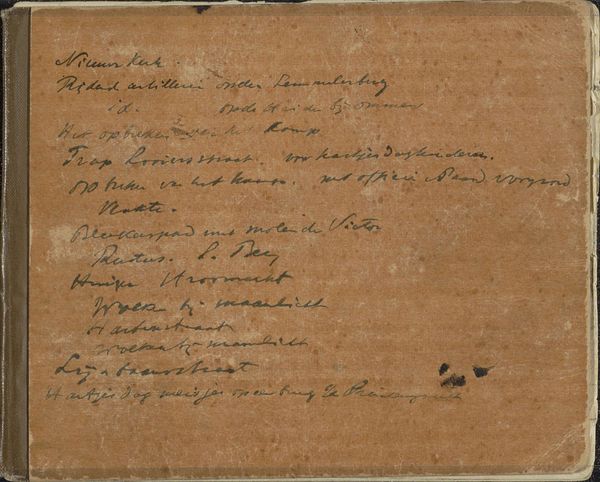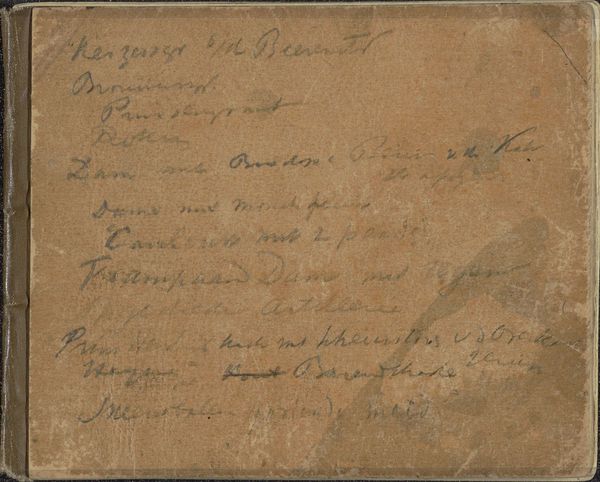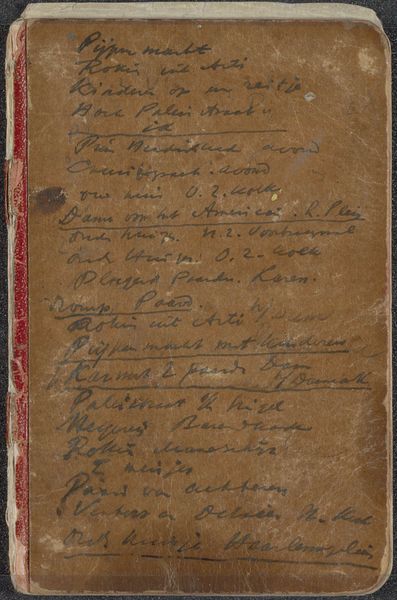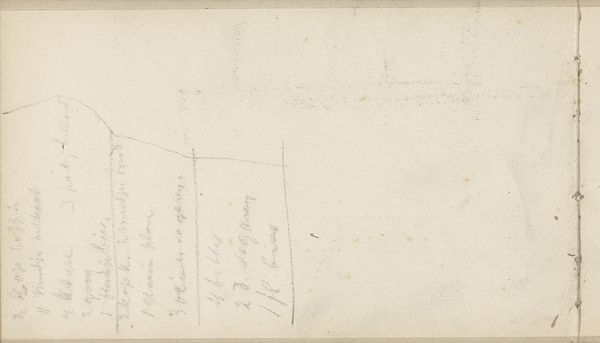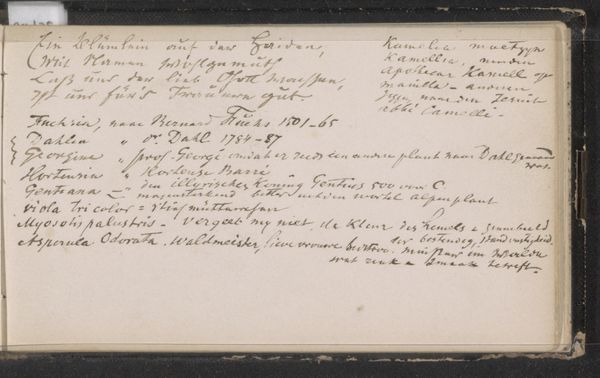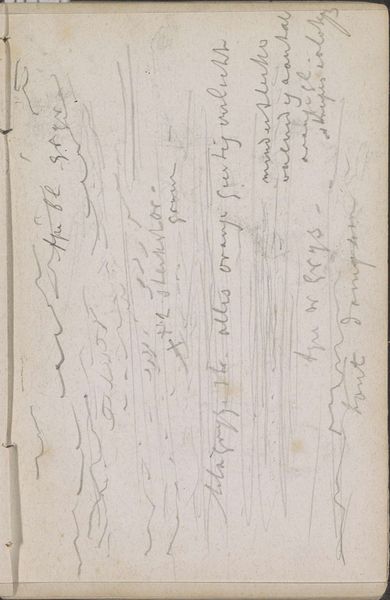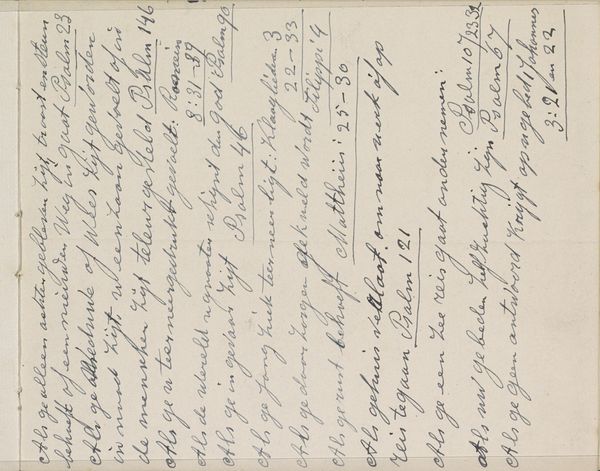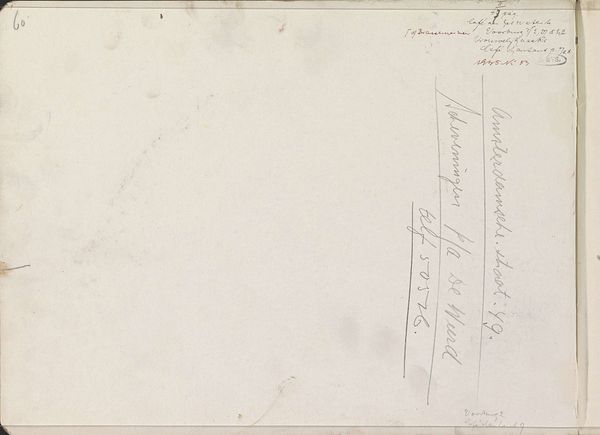
Dimensions: height 130 mm, width 162 mm, thickness 7 mm, width 325 mm
Copyright: Rijks Museum: Open Domain
This sketchbook, containing 27 leaves, was made by George Hendrik Breitner, presumably around the turn of the 20th century in the Netherlands. The book, now held at the Rijksmuseum, is a compelling object through which to explore the social conditions of artistic production. Looking at the cover, we can decipher various handwritten notes detailing locations such as ‘Keizersgracht,’ ‘Leidseplein,’ and ‘Kalverstraat’ – all places in Amsterdam. Breitner was known for documenting the city's bustling streets and working-class life. How might the artist have used this book? As a repository of initial impressions, quick sketches, and fleeting observations made on site? Was this the place where Breitner began forming his artistic response to a rapidly changing urban environment? Breitner was associated with the Amsterdam Impressionism movement, reacting against the rigid academic art of the time. His sketches provide valuable insights into his artistic process. By studying sketchbooks like these, alongside archival material like letters and exhibition catalogs, we can learn much about how artists develop their vision and challenge the norms of their time.
Comments
No comments
Be the first to comment and join the conversation on the ultimate creative platform.

